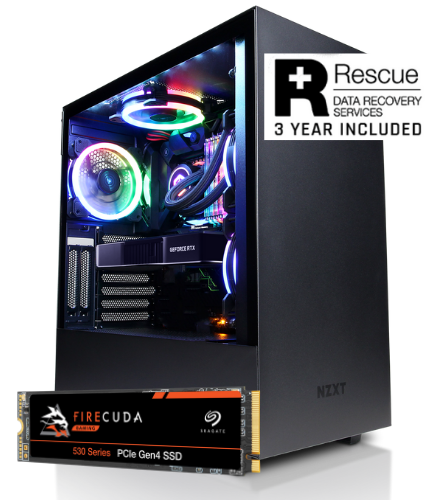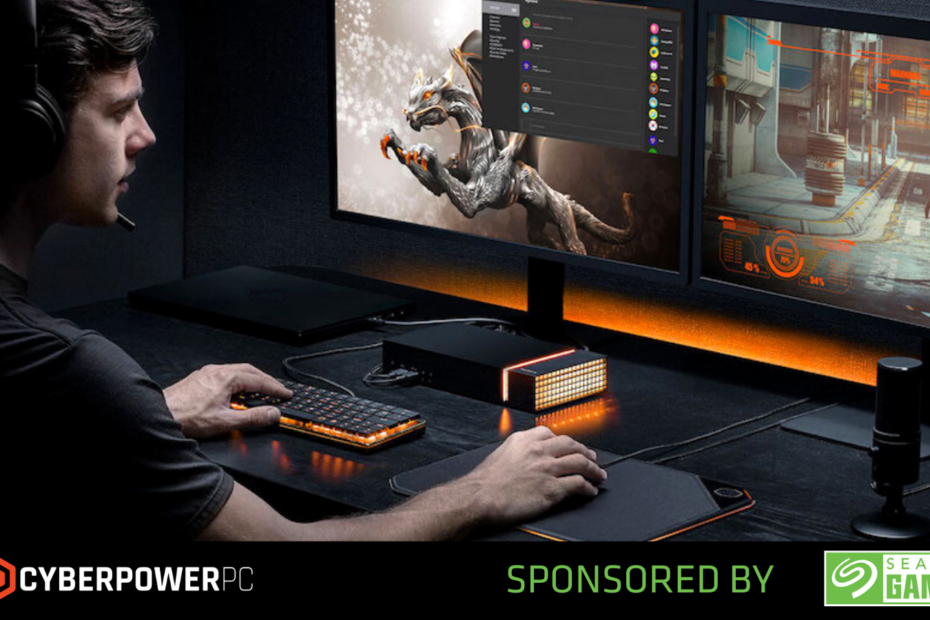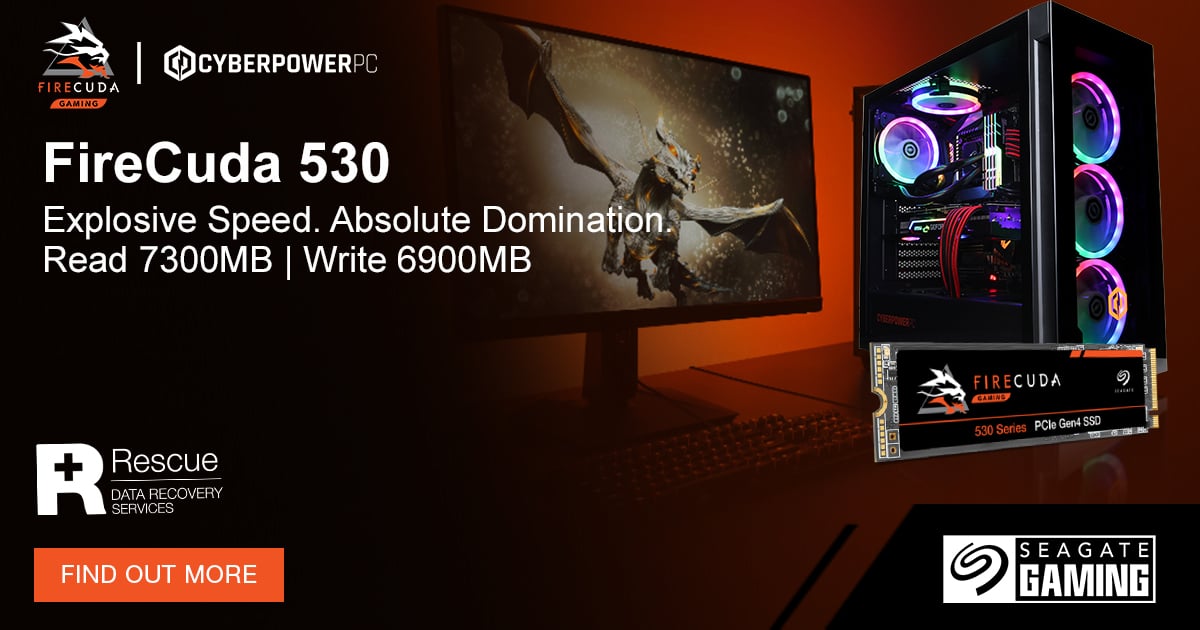Recent years have seen huge strides forward in computer storage technologies, and it’s hard to believe that not long ago, the industry-standard storage for any PC was a simple mechanical hard drive. Although hard disk drives (HDDs) still definitely have their place, the introduction of SSDs, and NVMe SSDs, make it hard to justify the use of a lone HDD as a system’s complete storage these days. This is partly due to the ever-increasing need for systems to be more responsive in order to meet the needs of the modern gamer, content creator and business professional.
Why Hard drives are still relevant?
Whilst HDDs can sometimes be seen as a technology of the past, they are still relevant when it comes to storage capacity. Comparisons with cost in mind show clearly that HDDs are the ‘bang for your buck’ choice when it comes to GB per £ spent.
Games these days can take 200GB+ of storage, so with just a handful of games you are looking at 1TB plus! Going the SSD route for bulk storage will often become expensive, especially for the gamer. So, how else are you going to store that 100+ game Steam library that you never play but refuse to uninstall? Hard drives, of course. Luckily for you, here at Cyberpower UK, we offer a wide range of HDD storage capacities from 1TB all the way up to 14TBs of storage! All HDDs we offer are brought to you by one of the best in the business: Seagate. On top of providing some of the most competitive and reliable HDDs out there, the Seagate IronWolf 4TB+ HDDs come with three years of FREE data recovery. That’s definitely something you won’t find with other storage manufacturers!
When it comes to being a content creator or a business professional, ensuring your data is safe and backed up is essential! Everyone who relies on a computer for work fears that one day their drive could corrupt, resulting in losing TBs of crucial data. This is why ensuring your data is backed up is a MUST DO! So, how would you go about doing this? Backing up your essential files on an SSD will become costly very quickly, which leaves the only viable option in choosing an HDD as your bulk storage option. As mentioned above, HDDs outperform all else when it comes to GBs per £ spent, and coupled with reliability, makes it the ideal choice for your bulk storage. If the day ever does arrive and your drive fails, as long as you are equipped with a qualifying Seagate drive, you will have access to 3 years of data recovery, all thanks to Seagate’s Data Rescue Service!

Dominate with Ferocious Speed With a FireCuda SSD
Upgrade your gaming experience with a Gaming PC built with a Seagate FireCuda SSD. Comes with 3 Years Data Recovery Services.
The use of SATA SSDs
The introduction of NVMe SSDs has enabled a wide range of choices when it comes to SSD storage options. Although, the standard 2.5-inch drive is still the most commonly used as they provide a middle ground between bulk storage needs and quick/responsive usability. Using an SSD over an HDD means no moving parts, which improves response times all across the board. This results in the reduction of application and game load times as well as a much faster boot time for your PC. I remember when I first upgraded my boot drive from a standard HDD to a SATA SSD; my boot time dropped from over 2 minutes to only 15 seconds, just like that!
NVMe SSDs
NVMe means Non-Volatile Memory Express and was invented back in 2011 in order to overcome the various bottlenecks of SATA. NVMe technology utilises the PCIe Bus rather than that of the SATA bus, which unlocks the huge bandwidth potential for storage devices. In theory, NVMe devices could transfer data at over 60,000MB/s compared to around 600MB/s with SATA drives. NVMe technologies are becoming crucial in a business and professional sense as in those lines of work, every microsecond counts! It is here that elements of real-time customer interactions such as finance or e-commerce and software sales agents largely benefit from the increase in performance that comes along with NVMe technologies.
Gamers can benefit largely through the use of NVMe drives. When it comes to game load times, there is no beating the performance of NVMe drives as they provide the fastest response times, enabling you to gain an edge over your competitors in multiplayer titles by loading in faster. In a game like Battlefield where loading these huge maps can take time, having an NVMe drive handle the loading could give you that advantage of getting into the action a lot faster than your competitors.
The Seagate FireCuda 530 currently leads the line as one of the best NVMe drives due to its superior performance (7300MB Read | 6900MB Write!!) and endurance over the competition. Adding in the benefit of the three years’ Data Rescue service, it’s clear the value provided by Seagate, in this case, is outstanding.
What do TBW (Total Terabytes Written) & DWPD (Data Writes Per Day) actually mean?
TBW and DWPD are both used to measure the endurance of flash storage. TBW is rated as the total number of terabytes that the SSD can have written to it in its warranty covered lifespan. For example, if your drive is rated for 400 TBW, that means you can write 400 TB of data into it before needing to be replaced.
DWPD, on the other hand, is a figure that represents what proportion of the capacity of an SSD can be filled, erased and/or rewritten on a daily basis. For example, if you have a 500 GB drive with a warranty of 4 years and its DWPD is 1, that means you can write 500 GB into it every day for the next four years.
Why Seagate leads the line when it comes to SSD and HDD Endurance
Seagate only uses top of the line NAND technologies, ensuring the customer their drives will outlive the competition, no matter the use. What is NAND? NAND is an alternative to DRAM, which was previously used within SSDs. NAND is more affordable and does not require a constant power supply whereas DRAM does. Any component will deteriorate over time although, if high-grade NAND is used, deterioration will come at a much slower rate, ensuring the highest performance levels for longer.
What is the Seagate Rescue Service?
Seagate Rescue Service is essentially a guarantee that if your drive fails, resulting in the loss of data, Seagate will perform data recovery to get your data back, free of charge. Seagate’s data rescue service has an Industry-leading success rate for in-house SSD and HDD data recovery of 95%, giving you the peace of mind that your data can be recovered effectively.
The service is included in the serial number of the product; therefore, no registration is necessary. All you need to do is contact Seagate support to initiate your claim. Once initiated, a parcel for the free post will arrive 24-48 hours later, with the average process turnaround taking two weeks. The service will cover one claim per drive and could save you up to £700! (paying for such a service can cost up to £700 alone). You can also log in to track the progress of the service.
The service will cover any Accidental damage, deletion, malware, virus, water damage, fire damage, vandalism etc.
Your data will then be sent back to you on an external HDD or via a 60-day online encryption key. You will also receive a replacement for the damaged drive right away whilst the data recovery service is in progress. On top of that, Seagate will cover all things Brexit duties.
Choice of Storage Type is Down to the Individual
So, to conclude, it’s clear there is a place for all storage types, which can slightly differ depending on the individual consumer’s need, with HDD’s being primarily useful for bulk storage and SSDs having the advantage when it comes to usability and responsiveness. I hope this blog has helped shed some light on the differences in storage drives and their use in the modern day.

